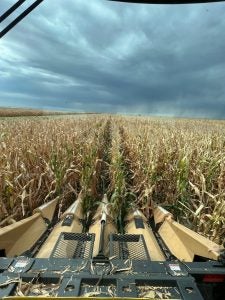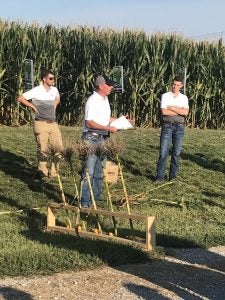The equipment might be parked in the shed, but you can rest assured farmers aren’t twiddling their thumbs over the winter months. Far from it. There’s data to analyze, decisions to be made, and equipment to ready for the coming growing season.
Comparing hybrid and variety performance
“Leveling-up performance starts with product selection,” says Jeff Joslin, who helped develop AgriGold’s SEED1st tool for creating seed plans. He says seed performance is determined by three major factors: genetics, the interaction of those genetics with the environment, and the management of those fields.
“The type and moisture storage capacity of soil should factor heavily into product placement,” says Kris Young, an AgriGold agronomist. “Some products handle stress well, while others handle high-yield response management better. Identifying where those areas are on your farm can help guide hybrid and variety selection.”
When comparing seed products, Young says farmers need to make sure they’re comparing apples to apples. “We like to see comparisons within one field, but if that’s not possible, make sure the fields have similar soil types and yield histories,” he says. “I think it’s great that farmers collect a lot of yield data across the farm, but it’s also smart to compare their results with those from other locations.”
Young also encourages farmers to utilize the expertise of their local agronomist. “I like to run head-to-head comparisons of AgriGold products against competitors’ seed,” he says, adding this can be done across several locations and years to account for differences in growing seasons.
It’s important that a farmer’s portfolio includes a mix of products to reduce risk, according to Young. “A blast of heat or a wind event at the wrong time could affect that hybrid more than another.”

Developing a customized seed plan
AgriGold’s SEED1st makes it simple to develop, share and collect input on a seed plan. To start, farmers answer a series of questions about their field management practices, crop challenges, and productivity goals. The tool pulls in information about field soil texture, drainage, and weather forecasts and considers product performance rankings from AgriGold agronomists to deliver a customized report with field-by-field product recommendations.
“The idea behind SEED1st is to offer users the ability to create better seed plans for more fields and to expend less time and energy doing so,” Joslin explains. “The tool is not meant to replace people. It shortens and enhances the discovery process and adds perspective. It offers advice at the field level more effectively.”
SEED1s can remove some emotion and biases that can come with seed buying — both for the farmer and the sales representative. “It offers users product options that might have been overlooked and can remind them to reconsider something like how a field’s natural drainage is impacted by its tile drainage and the weather forecast that may not have been fully evaluated,” Joslin explains.

Readying your equipment
In the months ahead, AgriGold Agronomist Sue Brakhane advises farmers to examine each piece of equipment they intend to use in the field. “Get your parts in, your tractor serviced and your spades changed,” she advises.
Brakhane says farmers should check hoses for wear, especially at folds or higher-movement areas that rub as the machine moves down the road or field. Pay close attention to anything that’s ground engaging, such as planter disc openers, seed tubes and gauge wheels, as the contact is high wear. Brakhane recommends inspecting sources of oil or fluid leaks. “Check the frame for any cracks. Check your tires for wear. Worn or low tires cost you efficiency.”
On the field cultivator, Brakhane says farmers need to “make sure the shovels are at their full width and overlap a bit. If they are too worn, they can make individual paths rather than a single, even path makes a good seed bed.” The same applies to vertical tools or any seed bed preparation machinery.
The other key when it comes to tillage is making sure fields are ready, Brakhane says. Impatience can result in a compaction or a smear layer that’s tough for roots to push through. Once the frost line is out of the soil, she recommends taking a spade to lower or wetter spots in the field and digging down to the depth you plan on running the machine to assess moisture.
Her final words of advice: “Make sure your monitor is ready to go and last year’s data is cleaned off so you have room for spring operations.”
Off-season prep work is critical to smooth sailing in the spring and a successful growing season.


